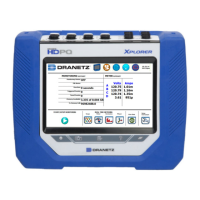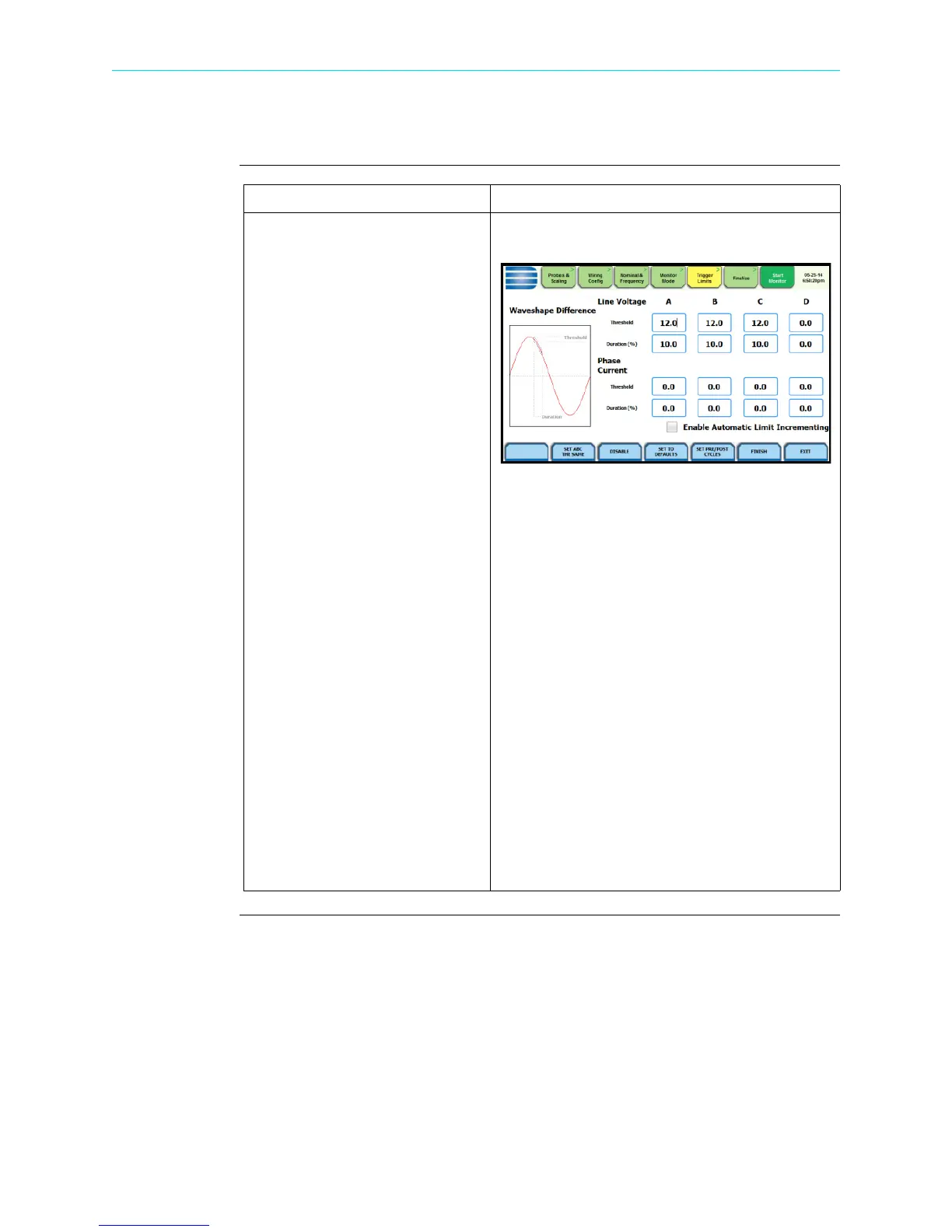4-30
Set Waveshape Transients
Set Waveshape Transients
Waveshape fault
detection
Action... Result...
STEP 1: From the Trigger Limits
Setup Options screen, press Set
Waveshape Transients.
HDPQ Xplorer shows the
“floating window” algorithm used
for waveshape fault detection.
• Press the limit field under
Threshold to change limit. Use
the keypad to enter the
threshold limit or tolerance. If
the wave samples differ by
more than the threshold
tolerance for a time exceeding
the duration or window percent
of power frequency cycle, a
waveshape fault is registered.
• Press the limit field under
Duration to change limit. Use
the keypad to enter the
threshold duration or window.
•Check Enable Automatic
Limit Incrementing to set
limit trigger channel settings to
auto-threshold mode.
Common Function keys:
The function keys common to the
rms and transient event setup
screens apply.
See pages 4-28 to
4-29.
NOTE: The figure above helps illustrate the
“floating window” algorithm used for waveshape
fault detection. This window is visualized on
screen as sliding along a waveform, precisely one
cycle behind the previous sample point, v
i
. The
height of the window defines a maximum
allowable voltage deviation in magnitude. The
width of the duration corresponds to a number of
sample points, N. For each sample v
i
, when
compared to v
i-1 cycle
where the deviation in
magnitude is outside the maximum allowable
deviation, a counter is incremented. For each
sample v
i
that is within the maximum allowable
deviation, the counter, if greater than 0, is
decremented. If the count reaches N, a trigger
occurs.
HDPQ-418
Shop for Power Metering products online at:
1.877.766.5412
www.PowerMeterStore.com

